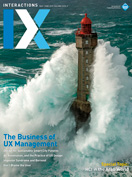Authors:
Helena Mentis
In order to increase access to our publications across more types of mobile and assistive devices, ACM is in the midst of a change to the underlying format of our scholarly publications (i.e., journals and conference archival papers). The goal is to create a more flexible and resilient archive format and reduce the dependency on PDFs using the XML-based Journal Article Tag Suite (JATS) [1], already in use at many scientific publishers. This will enable us to use formats like HTML for both the submission of new work and the output for how readers view our articles.
This process has not been easy, requiring the input of several groups affiliated with SIGCHI. It is therefore helpful to consider the different groups that make decisions about publications, and the kinds of decisions they make.
The Association for Computing Machinery. ACM is the publisher of SIGCHI publications, and as such it maintains the central repository of work (the Digital Library – DL [2]) and enforces the policies set by the ACM Publications Board [3]. In general it is supportive of individual SIGs and conferences to define scholarship and publication policies overall. ACM also hires contractors to do some of the work that it cannot do internally.
The ACM Publications Board. The ACM Publications Board advises ACM on publishing issues and helps set policies for ACM publications [4]. Members of the Pubs Board are volunteers from the ACM community, representing multiple SIGs. The Pubs Board makes decisions on changes to the publishing process by considering whether it will hurt the perceived quality of the ACM brand in publishing. Policies then help coordinate and clarify activity across hundreds of conferences and publications. The Pubs Board also advises on and develops strategic initiatives for the ACM Digital Library, such as its recent redesign [5].
SIGCHI. The Executive Committee of SIGCHI supports and guides each of the 24 SIGCHI-sponsored conferences [6], large and small. It inherits all of the publication policies set by ACM and then offers a series of other policies for SIGCHI conferences to follow [7]. SIGCHI policies mostly exist to confirm the uniqueness of the work by the author and set guidelines for the reviewing process.
Conference steering committees. Each conference that has been organized under the auspices of SIGCHI with a (co-)sponsored status (of at least 50 percent) has a steering committee (SC). The chair of each committee is the privileged contact point, providing feedback on the issues faced by the conference series and transferring information and procedures to the organizers of the next conferences of that series. Each SC coordinates with SIGCHI and ACM and provides feedback about policies, and will support the annual organizers in what they can do for publications.
Annual conference chairs, technical program chairs, and papers chairs. Amazing people volunteer every year to write the calls, find the reviewers, define the process, and do the thousand other things necessary for a conference to accept, review, and publish intellectual work. When it comes to our archival publications, these decisions are usually made by the conference's technical program chair and papers chairs. Optimally, the annual chairs propose major changes to publications ahead of the call for papers, and those changes are then approved by the various groups above.
Of course one of the most important volunteer groups is our SIGCHI members. If you are interested in helping in the transition to the new format for our publications, please watch for calls via email, or the SIGCHI Facebook Group or Twitter account, to participate in various testing activities that will be available as new versions of the template come to life. It is important to document any struggles with the templates to provide strong feedback for iteration. You can send that documentation to each individual conference's papers chairs, who will route it back to the SIGCHI vice president for publications.
Volunteers can also provide feedback on the new Digital Library (https://dlnext.acm.org/). Use the feedback link at the bottom left of the page.
An overview of the motivations behind this change has been distributed in the Blue Diamond Newsletter: https://www.acm.org/articles/pubs-newsletter/2019/blue-diamond-mar-2019#3
Amazing people volunteer every year to write the calls, find the reviewers, define the process, and do the thousand other things necessary for a conference to accept, review, and publish intellectual work.
Current information about the rollout of the new workflow is available here: https://www.acm.org/publications/proceedings-template
An overview of the new workflow is available here: https://www.acm.org/publications/taps/word-template-workflow
1. https://en.wikipedia.org/wiki/Journal_Article_Tag_Suite
3. https://www.acm.org/publications/policies
4. https://www.acm.org/publications-board-committees
6. https://sigchi.org/conferences/
7. https://sigchi.org/about/sigchi-policies/
Helena Mentis, President, SIGCHI [email protected]
Copyright held by author
The Digital Library is published by the Association for Computing Machinery. Copyright © 2019 ACM, Inc.









Post Comment
No Comments Found